
Additive Manufacturing Letters
Scope & Guideline
Leading the Charge in Additive Manufacturing Advancements
Introduction
Aims and Scopes
- Material Development and Characterization:
The journal emphasizes the development of novel materials specifically designed for additive manufacturing processes, as well as their characterization in terms of mechanical properties, microstructure, and performance under various conditions. - Process Optimization and Control:
Research focusing on the optimization of additive manufacturing processes, including laser powder bed fusion, electron beam melting, and material extrusion, to enhance print quality, reduce defects, and improve efficiency is a core area. - Innovative Manufacturing Techniques:
The journal covers emerging additive manufacturing methods and technologies, such as hybrid systems, multi-material printing, and novel printing techniques, contributing unique insights into their operational mechanics. - In-situ Monitoring and Quality Control:
A significant focus is placed on in-situ monitoring techniques that ensure the quality and integrity of additively manufactured parts, including acoustic emission monitoring and thermal imaging. - Applications in Various Industries:
The journal highlights the application of additive manufacturing across diverse sectors such as aerospace, biomedical, and automotive, showcasing case studies and research that demonstrate practical implementations. - Machine Learning and Computational Modeling:
There is an increasing integration of machine learning and computational modeling approaches to predict outcomes, optimize processes, and understand complex behaviors in additive manufacturing.
Trending and Emerging
- Advanced Material Composites:
There is a growing interest in the development and application of advanced composite materials, particularly those incorporating nanoparticles or multi-material configurations, to enhance mechanical and thermal properties. - Machine Learning Applications:
The integration of machine learning techniques for process optimization, defect detection, and predictive modeling is increasingly prevalent, showcasing the journal's commitment to leveraging data-driven approaches. - In-situ Monitoring and Real-time Feedback:
Research focusing on real-time monitoring and feedback mechanisms during the additive manufacturing process has gained traction, emphasizing the importance of ensuring part quality and process reliability. - Sustainability and Recycling in Additive Manufacturing:
Emerging themes around sustainability, including the recycling of materials and energy-efficient manufacturing processes, are becoming more prominent as the industry seeks to reduce its environmental impact. - Biomedical Applications:
There is a significant increase in research dedicated to the biomedical applications of additive manufacturing, particularly in the development of custom implants and prosthetics tailored to individual patient needs.
Declining or Waning
- Traditional Materials:
Research on traditional materials (e.g., standard alloys like Al and Ti) has been overshadowed by the exploration of advanced and composite materials, limiting the frequency of studies solely focused on conventional materials. - Basic Additive Techniques:
There has been a noticeable reduction in studies exploring basic additive manufacturing techniques without innovative modifications or enhancements, as the field increasingly emphasizes novel methodologies and applications. - Low-Resolution Printing Technologies:
Themes related to low-resolution or older additive manufacturing technologies have seen decreased attention, as the industry moves toward high-resolution and more precise printing methods. - General Process Descriptions:
Papers that merely describe additive manufacturing processes without offering new insights, optimizations, or applications are becoming less common, as the journal favors more innovative and application-driven research.
Similar Journals

3D Printing and Additive Manufacturing
Transforming Ideas into Reality with Additive Manufacturing3D Printing and Additive Manufacturing, published by MARY ANN LIEBERT, INC, stands at the forefront of innovation in the realms of manufacturing and materials science. With an ISSN of 2329-7662 and E-ISSN 2329-7670, this journal provides a critical platform for researchers, professionals, and students to explore the latest advancements and applications of additive manufacturing technologies. Since its inception in 2014, the journal has rapidly gained recognition, currently holding a reputable Q2 classification in both Industrial and Manufacturing Engineering and Materials Science categories, as reflected in its 2023 Scopus Rankings. It is noted for its insightful peer-reviewed articles that cover a diverse range of topics including design methodologies, materials performance, and sustainability in 3D printing. Although not open access, the journal's readership is expanding, backed by its significant contributions to the field amidst evolving industrial landscapes.

INTERNATIONAL JOURNAL OF ADVANCED MANUFACTURING TECHNOLOGY
Shaping Tomorrow’s Manufacturing Landscape Today.International Journal of Advanced Manufacturing Technology, published by Springer London Ltd, is a leading journal in the fields of advanced manufacturing, technology, and engineering. With a dedicated ISSN of 0268-3768 and an E-ISSN of 1433-3015, this journal serves as a critical platform for researchers and practitioners to disseminate cutting-edge findings and innovations that are shaping the future of manufacturing technology. Operating from the heart of the United Kingdom, this journal prides itself on its rigorous peer-review process and high-quality publication standards, reflected in its Q2 ranking in multiple categories including Computer Science Applications, Control and Systems Engineering, and Industrial and Manufacturing Engineering among others. The journal features a broad scope that encompasses novel methodologies, advancements in automation, and sustainable practices within the manufacturing sector. Targeting a multidisciplinary audience, including researchers, professionals, and graduate students, the International Journal of Advanced Manufacturing Technology is an invaluable resource for those looking to stay at the forefront of manufacturing innovations from 1985 to 2024.

INTERNATIONAL JOURNAL OF REFRACTORY METALS & HARD MATERIALS
Uncovering the potential of refractory materials in technology.INTERNATIONAL JOURNAL OF REFRACTORY METALS & HARD MATERIALS, an esteemed publication by Elsevier Science Ltd, stands at the forefront of materials research, focusing on the development and application of refractory metals and hard materials in various engineering fields. With an impressive impact factor and recognition as a Q1 journal across several categories including Ceramics and Composites, Materials Chemistry, and Mechanical Engineering, it serves as a vital resource for researchers, professionals, and students alike. The journal has been continuously publishing high-quality research since its inception in 1982, with a convergence of developments spanning through to 2024. Its Scopus rankings further emphasize its significance, boasting ranks in the top percentiles of relevant scientific fields. Although it operates under a subscription model, the depth and rigor of the research published within its pages ensures that it remains an invaluable tool for those pursuing innovation and exploration in materials science.
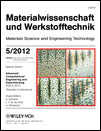
MATERIALWISSENSCHAFT UND WERKSTOFFTECHNIK
Empowering Engineers Through Material Insights.MATERIALWISSENSCHAFT UND WERKSTOFFTECHNIK, published by WILEY-V C H VERLAG GMBH, is a prominent journal dedicated to the field of materials science and engineering. With its ISSN 0933-5137 and E-ISSN 1521-4052, this journal serves as a vital resource for researchers and professionals engaged in exploring the intricate relationships between the properties of materials and their applications. Established in 1970 and continuing through 2024, the journal has been consistently recognized in various categories, achieving a Q3 ranking in 2023 across Condensed Matter Physics, Materials Science (miscellaneous), Mechanical Engineering, and Mechanics of Materials. Although it does not offer open access, its high-quality peer-reviewed content is fundamental to the advancement of knowledge within its three key areas: novel material development, material characterization, and application of materials in engineering contexts. As a driving force in the scientific community, MATERIALWISSENSCHAFT UND WERKSTOFFTECHNIK continues to cater to the curiosity of aspiring students, seasoned professionals, and researchers alike, facilitating a deeper understanding of the complexities of material technology.
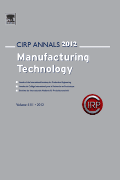
CIRP ANNALS-MANUFACTURING TECHNOLOGY
Advancing Manufacturing Excellence Through Innovative ResearchCIRP ANNALS-MANUFACTURING TECHNOLOGY is a prestigious journal published by Elsevier, dedicated to advancing the fields of Industrial and Manufacturing Engineering and Mechanical Engineering. With an impressive impact factor placing it in the Q1 category for both disciplines, this journal showcases cutting-edge research that drives innovation and technological advancements in manufacturing processes and systems. Despite not being an open access journal, it is widely recognized for its rigorous peer-review process and high-quality content, including original research articles, reviews, and case studies that are essential for professionals, researchers, and students alike. The journal's long history since its inception in 1964 underlines its ongoing commitment to contributing significant knowledge in manufacturing technology. Its relevance is further emphasized by its strong Scopus rankings, placing it in the top percentiles of its categories, ensuring that it serves as a critical resource for anyone looking to stay ahead in the ever-evolving landscape of manufacturing technology.

Journal of Manufacturing and Materials Processing
Advancing Innovation in Manufacturing and MaterialsThe Journal of Manufacturing and Materials Processing is a premier *open access* journal published by MDPI since 2017, located in Switzerland. This scholarly publication provides a vital platform for sharing cutting-edge research in the fields of industrial and manufacturing engineering, mechanical engineering, and mechanics of materials. With an impressive categorization ranking in the Q2 quartile for these disciplines as of 2023, this journal not only enhances the global discourse in manufacturing and materials processing but also showcases significant contributions from researchers worldwide. Its robust positioning in Scopus rankings—placing 118th in Industrial and Manufacturing Engineering and 179th in Mechanical Engineering—underscores its impact and relevance in the academic community. As a *fully open access* journal, it ensures that all research is readily accessible, promoting greater dissemination of knowledge and fostering collaboration among scientists, engineers, and industry professionals. This makes the Journal of Manufacturing and Materials Processing an essential resource for anyone invested in the advancements of material technology and manufacturing processes.
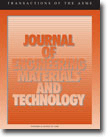
JOURNAL OF ENGINEERING MATERIALS AND TECHNOLOGY-TRANSACTIONS OF THE ASME
Advancing the frontier of engineering materials and technology.JOURNAL OF ENGINEERING MATERIALS AND TECHNOLOGY-TRANSACTIONS OF THE ASME is a premier journal published by the American Society of Mechanical Engineers (ASME), dedicated to advancing the field of engineering materials and technology. With an ISSN of 0094-4289 and E-ISSN 1528-8889, this journal has provided invaluable insights since its inception in 1973. Operating from its headquarters in New York, United States, it serves a global audience of researchers, professionals, and students alike. The journal is recognized for its rigorous peer-review process and its commitment to disseminating high-quality research, currently holding a Q3 quartile ranking across multiple categories including Condensed Matter Physics, Materials Science, Mechanical Engineering, and Mechanics of Materials. With a focus on exploring innovative materials and their applications, it aims to foster collaboration and discovery in the engineering community. Although it is not an open-access journal, it continues to play a vital role in shaping the future of engineering materials research up to 2024. Researchers and practitioners will find in this journal a significant platform to support the development and understanding of engineering materials, making contributions that resonate through academia and industry.
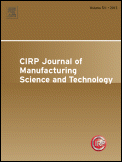
CIRP Journal of Manufacturing Science and Technology
Fostering Collaboration in Manufacturing ExcellenceCIRP Journal of Manufacturing Science and Technology is a highly respected publication in the field of Industrial and Manufacturing Engineering, published by Elsevier in the Netherlands. With a Q1 ranking in its category and a Scopus ranking of #51 out of 384, the journal reflects its prominence and contribution to the scientific community, boasting an impressive percentile ranking of 86th. Since its inception in 2008, the journal has served as a pivotal platform for disseminating cutting-edge research in manufacturing science, promoting advancements in technology and process optimization. While not an open-access journal, the content is available through institutional subscriptions, ensuring that critical findings reach a wide audience of researchers, professionals, and students. The CIRP Journal aims to foster innovation and collaboration among experts, making it an essential resource for those looking to stay at the forefront of manufacturing research and technology.
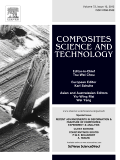
COMPOSITES SCIENCE AND TECHNOLOGY
Unlocking Potential through Cutting-Edge Composite TechnologiesComposites Science and Technology, a premier journal published by Elsevier Sci Ltd, serves as a vital resource in the fields of composite materials and engineering. With an impressive 2023 impact factor reflecting its influential contributions, this journal has established itself within the top tier of academic publishing, flaunting a Q1 ranking in both the Ceramics and Composites and Engineering (Miscellaneous) categories. Covering a diverse range of topics from the development of novel composite materials to their practical applications across various industries, it is recognized for its rigorous peer-review process and high-quality research outputs. As reflected in its Scopus rankings, Composites Science and Technology places in the 97th percentile among general engineering journals and the 94th percentile amongst ceramics and composites science literature. Researchers and professionals alike benefit from its comprehensive access to cutting-edge discoveries and advancements, making it an indispensable tool for driving innovation within this dynamic field.

JOURNAL OF MATERIALS PROCESSING TECHNOLOGY
Transforming Ideas into Advanced Materials SolutionsJOURNAL OF MATERIALS PROCESSING TECHNOLOGY, published by ELSEVIER SCIENCE SA, is a premier international journal dedicated to the dissemination of cutting-edge research in the field of materials processing. With an impact factor indicative of its high academic quality, this journal features a diverse range of topics, including ceramics, composites, metals, and manufacturing technologies, thereby inspiring innovations within its community. As a recognized Q1 journal across multiple categories—including Ceramics and Composites, Computer Science Applications, Industrial and Manufacturing Engineering, and Modeling and Simulation— it ranks among the top in its field. The journal's rigorous peer-review process ensures the publication of only the most significant and relevant studies, supporting researchers, professionals, and students in advancing their knowledge and expertise. With its commitment to excellence, the JOURNAL OF MATERIALS PROCESSING TECHNOLOGY remains a vital resource for those aiming to push the boundaries of materials science and engineering.